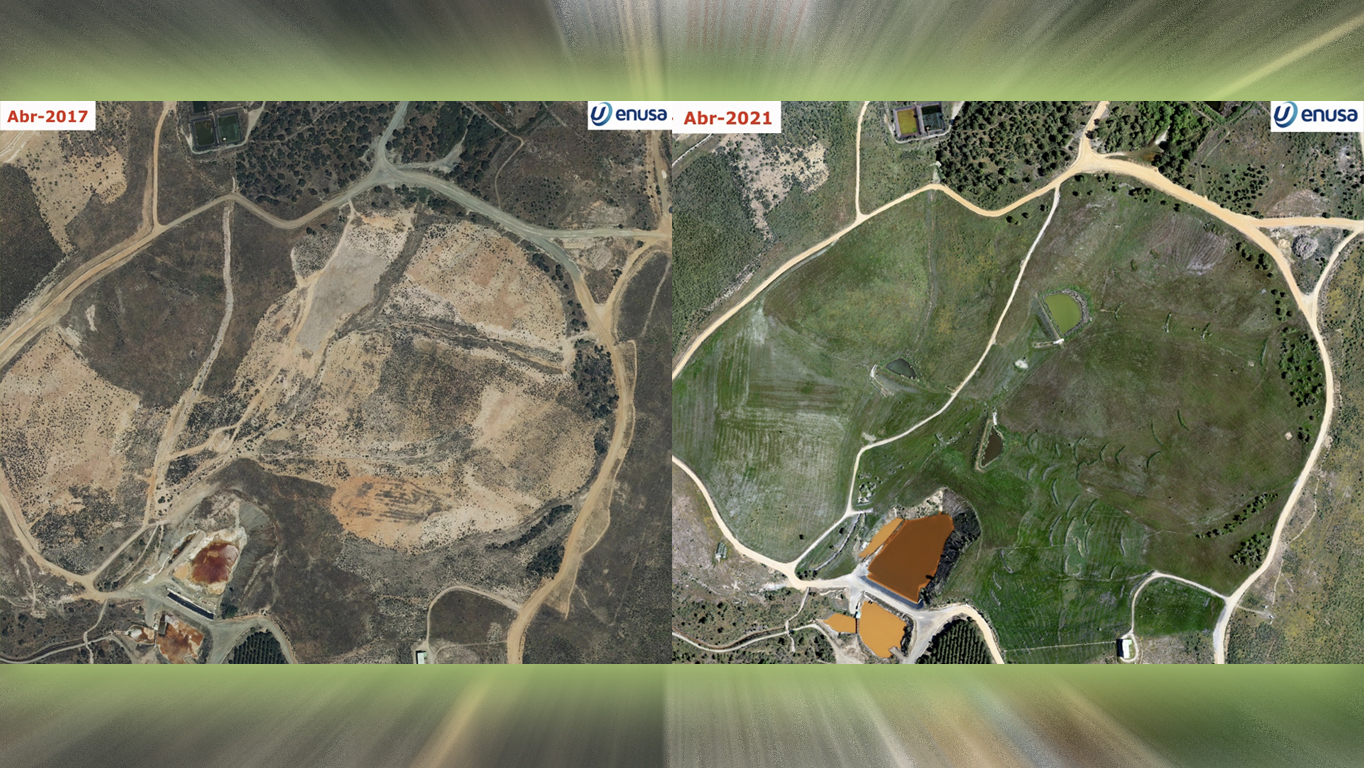The generation of acid mine drainage (AMD) is a circumstance that is conditioning the remediation of the old uranium mining operations of ENUSA in Saelices el Chico (Salamanca) and the dismantling and decommissioning of the associated remaining structures, so that it is necessary to resort to chemical treatments for neutralization and purification of the acid waters generated at the site. As an added problem particular in uranium mining, these treatments generate neutralization sludge in which the natural radioisotopes leached by acid waters accumulate, with very low activity and long life.
Searching for passive solutions to prevent or reduce the generation of acid water drainage, one of the tools that is proving to be the most effective for this purpose is the application of artificial soils or technosols. Technosols are soils designed, formulated and manufactured with the appropriate components and properties to solve or mitigate existing problems. Bioactive compounds, which work through the same physicochemical and biotic mechanisms as natural soils, can be elaborated multiplying their effectiveness against each specific problem, and can be complemented with the use of the appropriate plant species, to result in an optimal restoration process or methodology for areas where AMD occurs.

After several initial tests, an environmental R&D project called TEKURA developed in 2016. This project involve the application of technosols on a 52-ha basin, with a closed unit behaviour to ensure the representativeness of the data obtained, generating a methodology, a product and a treatment capable of avoiding the formation of AMD, and combining the use of different bioactive compounds manufactured in situ and the use of different plant species, as a passive environmental solution to the presence of AMD on site.

The TEKURA project, developed between 2017 and 2020, has achieved all the proposed goals among which it is worth mentioning that the recovery of the edaphic cover has been achieved, as well as the chemical improvement of surface and sub-flow waters in the environment of the restored Fe-1 open-pit, through the joint use of technosols and reactive wetlands, designed, formulated and manufactured from materials of the mining site itself and from low value waste or by-products from the immediate environment, thus minimizing the carbon footprint of the foreseeable destination of these substances in landfills and reusing these compounds in environmental remediation, regeneration of biological activity and productivity, biodiversity and the landscape of a system strongly degraded by anthropic activities, all framed under the principles governing the circular economy.




